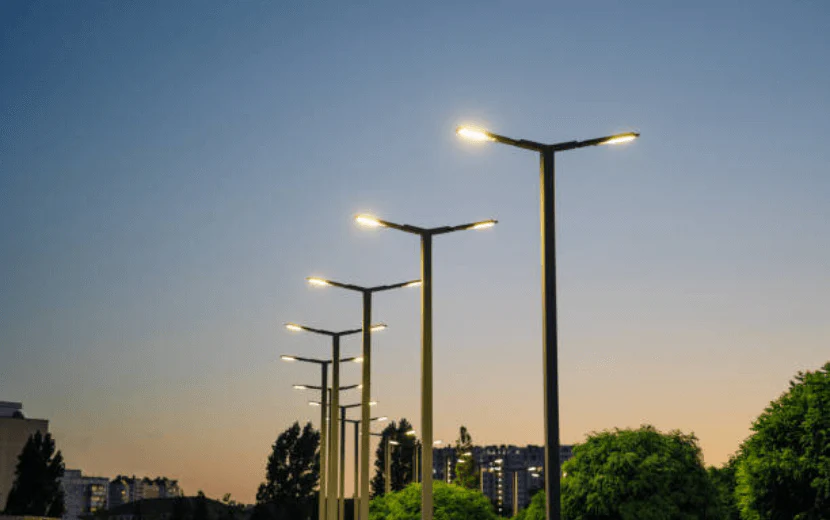When it comes to making environmentally conscious decisions, every small change adds up. One of the most impactful changes a business or municipality can make is switching to LED parking lot light. This change not only enhances the safety and aesthetics of the area but also brings significant environmental benefits. Let’s talk about how upgrading to LED parking lot lights can positively affect our planet.
Reducing Energy Consumption
Traditional parking lot lights, such as metal halide or high-pressure sodium lamps, consume a large amount of electricity. In contrast, LED parking lot lights are significantly more energy-efficient. LED lights use up to 75% less energy than traditional lighting solutions, which translates into a substantial reduction in electricity usage.
This decrease in energy consumption has a direct impact on the environment. The majority of the world’s electricity is still generated from fossil fuels, which contribute to greenhouse gas emissions. By switching to LED parking lot lights, we can reduce the demand for electricity, thus lowering the amount of fossil fuels burned and decreasing our carbon footprint. This is a crucial step towards mitigating climate change and promoting sustainable energy use.
Lowering Greenhouse Gas Emissions
As mentioned earlier, the reduced energy consumption of LED parking lot lights leads to a decrease in greenhouse gas emissions. When power plants burn fossil fuels to generate electricity, they release carbon dioxide (CO2) and other greenhouse gases into the atmosphere. These gases trap heat, leading to global warming and climate change.
By choosing LED parking lot lights, businesses and municipalities can significantly lower their CO2 emissions. According to the U.S. Department of Energy, “By 2035, the majority of lighting installations are anticipated to use LED technology, and energy savings from LED lighting could top 569 TWh annually by 2035, equal to the annual energy output of more than 92 1,000 MW power plants.” This massive reduction in energy consumption and CO2 emissions can have a profound impact on the environment.
Reducing Light Pollution
Another environmental benefit of LED parking lot lights is the reduction of light pollution. Traditional lighting fixtures often emit light in all directions, including upwards into the sky. This not only wastes energy but also contributes to light pollution, which can disrupt ecosystems and obscure our view of the night sky.
LED parking lot lights are designed to be more directional, meaning they can be aimed precisely where the light is needed. This reduces the amount of stray light that escapes into the environment, thereby minimizing light pollution. Improved lighting design with LEDs ensures that the light is directed downwards, illuminating the parking lot effectively without spilling over into surrounding areas.
Enhancing Wildlife Preservation
Light pollution doesn’t just affect humans; it also has a significant impact on wildlife. Many animals rely on natural light cycles to regulate their behaviors, including migration, reproduction, and feeding. Artificial lighting can disrupt these natural patterns, leading to negative consequences for wildlife.
For example, sea turtles use the moonlight to navigate to the ocean after hatching. Bright artificial lights can disorient them, causing them to head in the wrong direction. Similarly, migratory birds that travel at night can become confused by artificial lights, leading to exhaustion or collisions with buildings.
By reducing light pollution with LED parking lot lights, we can help preserve natural habitats and protect wildlife. The focused illumination of LED lights ensures that the surrounding environment remains as undisturbed as possible.
Decreasing Hazardous Waste
Traditional lighting solutions, such as fluorescent and high-intensity discharge (HID) lamps, often contain hazardous materials like mercury. When these lights are disposed of improperly, they can release toxic substances into the environment, contaminating soil and water and posing health risks to humans and wildlife.
LED parking lot lights do not contain mercury or other hazardous materials, making them a safer and more environmentally friendly option. Additionally, LEDs have a much longer lifespan than traditional lights, which means they need to be replaced less frequently. This results in less waste and fewer resources used for manufacturing and disposal.
Supporting Sustainable Practices
Switching to LED parking lot lights aligns with broader sustainability goals and corporate social responsibility initiatives. Companies and municipalities that adopt LED lighting demonstrate a commitment to reducing their environmental impact and promoting sustainable practices. This can enhance their reputation and appeal to environmentally conscious consumers and stakeholders.
Moreover, the energy savings achieved with LED lights can translate into financial savings, which can be reinvested in other green initiatives. This creates a positive feedback loop, where initial investments in sustainable technology lead to further opportunities for environmental stewardship.
Conclusion
The environmental impact of switching to LED parking lot light is profound. From reducing energy consumption and greenhouse gas emissions to minimizing light pollution and protecting wildlife, LED lights offer numerous ecological benefits. They also decrease hazardous waste and support broader sustainability goals.
Making the switch to LED parking lot lights is a simple yet effective way to contribute to a healthier planet. For businesses and municipalities looking to make this transition, LFD Lighting is the go-to place. Their expertise and high-quality LED solutions ensure that your lighting needs are met in an environmentally responsible manner.



